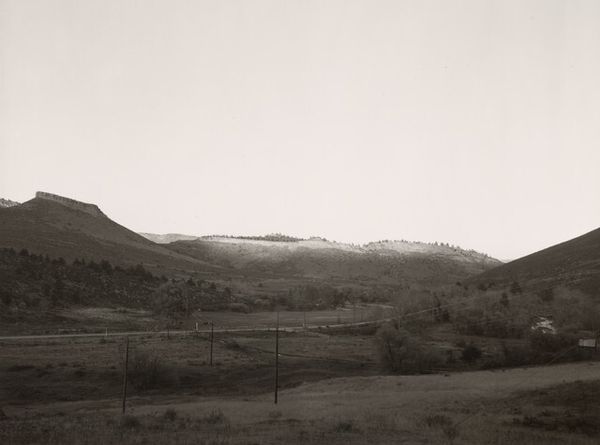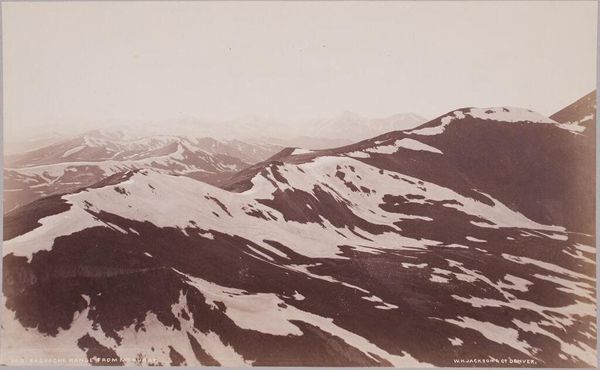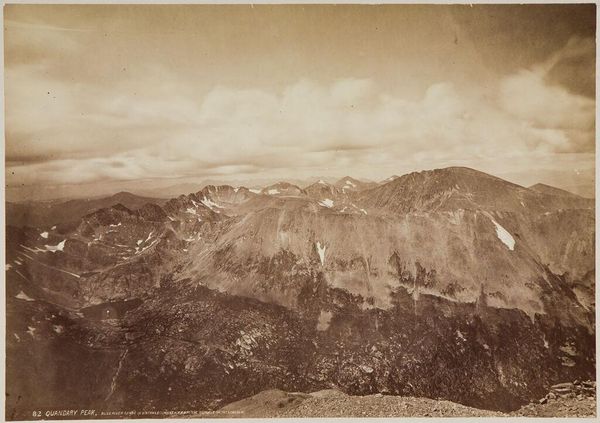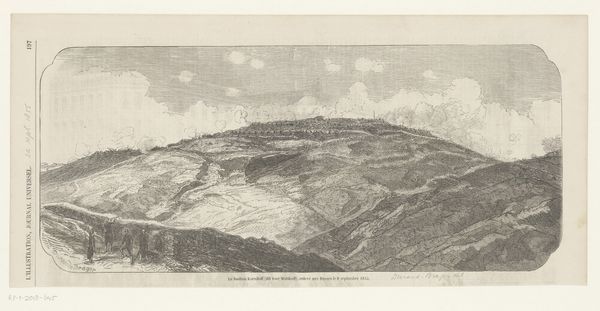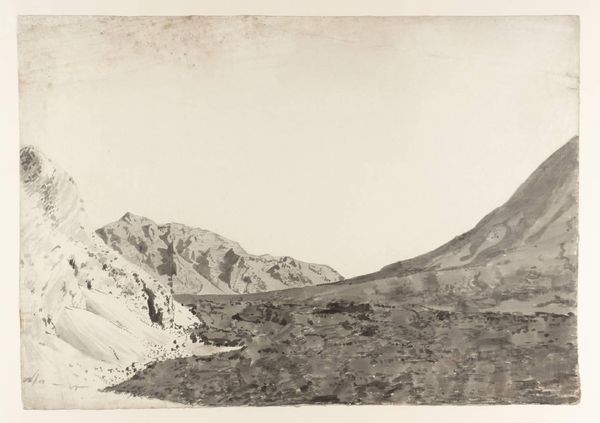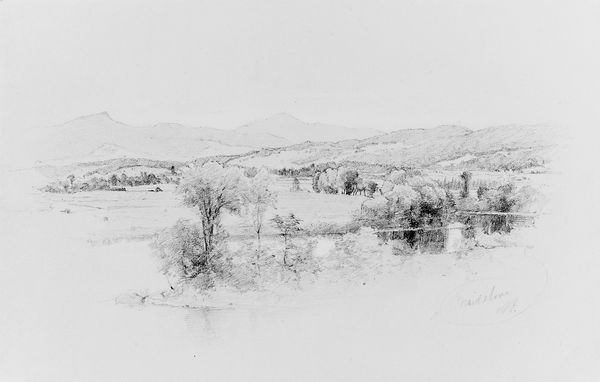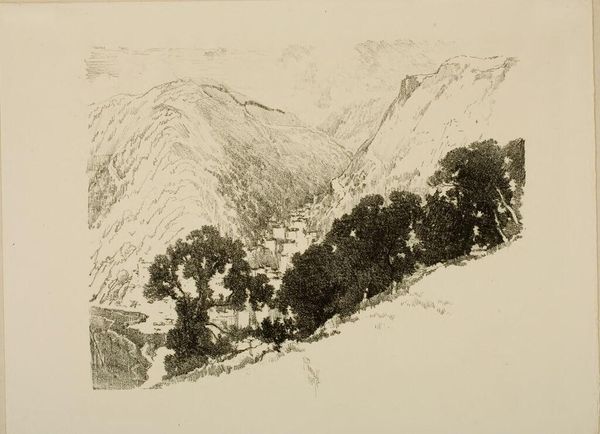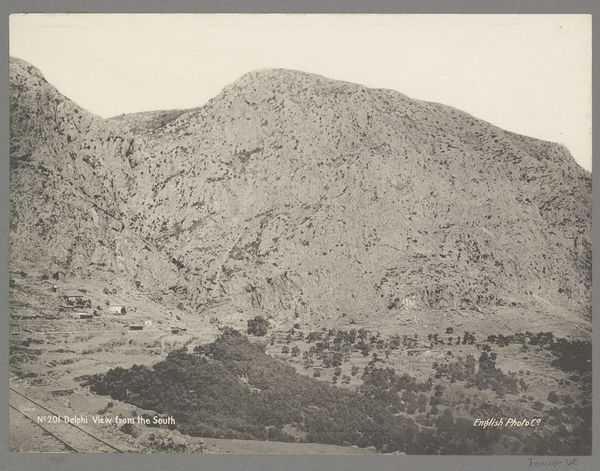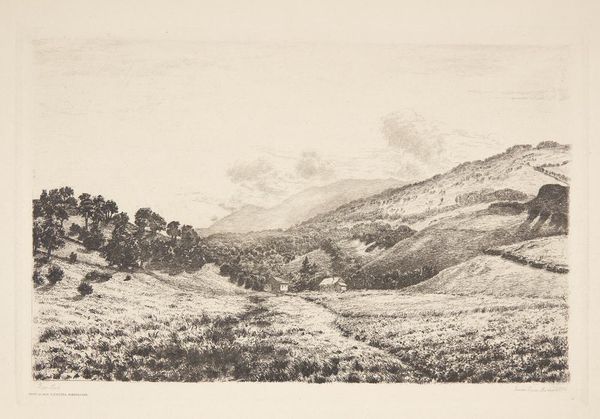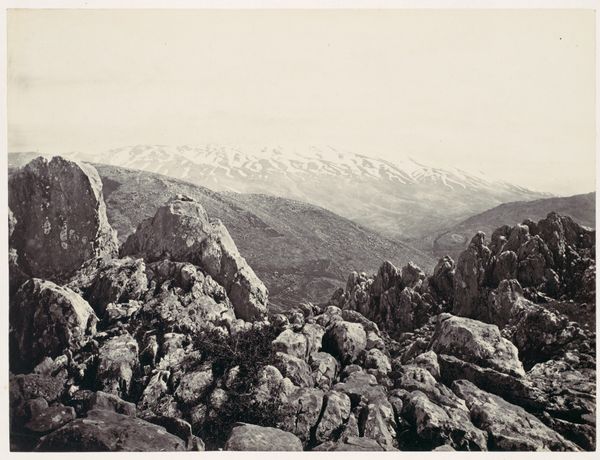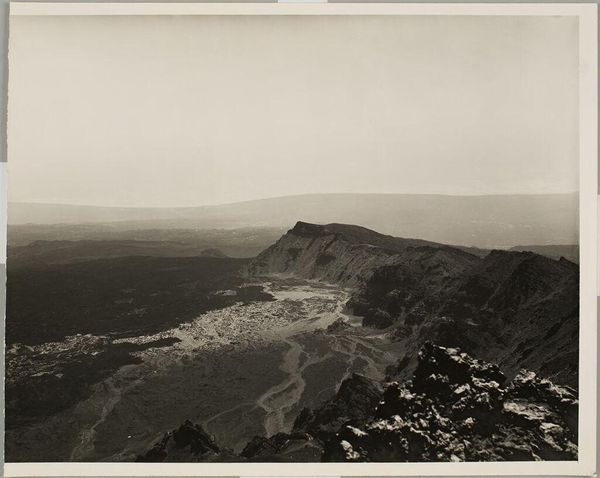
photography, gelatin-silver-print
#
excavation photography
#
cloudy
#
photorealism
#
black and white photography
#
snowscape
#
countryside
#
postmodernism
#
landscape
#
photography
#
outdoor scenery
#
environmental-art
#
sky photography
#
gelatin-silver-print
#
monochrome photography
#
skyscape
#
monochrome
#
shadow overcast
Dimensions: image: 17.9 × 22.2 cm (7 1/16 × 8 3/4 in.) sheet: 27.7 × 35.4 cm (10 7/8 × 13 15/16 in.)
Copyright: National Gallery of Art: CC0 1.0
Robert Adams made this black and white photograph, ‘North from Flagstaff Mountain, Boulder County, Colorado,’ as part of his engagement with the American West. He used his camera to draw attention to the impact of human development on the natural landscape. Adams pointedly juxtaposes the untouched beauty of the mountain with the sprawl of Boulder in the distance, inviting us to consider the social and economic forces behind the changing landscape. Think about the history of westward expansion in the U.S. – the narratives around progress and the claiming of land. How does Adams’s photograph engage with that history? Is it a celebration or a critique? As historians, we might dig into census data, land development records, and environmental impact studies to understand the changes Adams is documenting. We might also explore the work of other photographers who were part of the ‘New Topographics’ movement, in order to see the institutional contexts through which these artists questioned the traditional landscape photography. In doing so, we recognize that art is not made in a vacuum, but in response to specific historical and institutional forces.
Comments
No comments
Be the first to comment and join the conversation on the ultimate creative platform.

